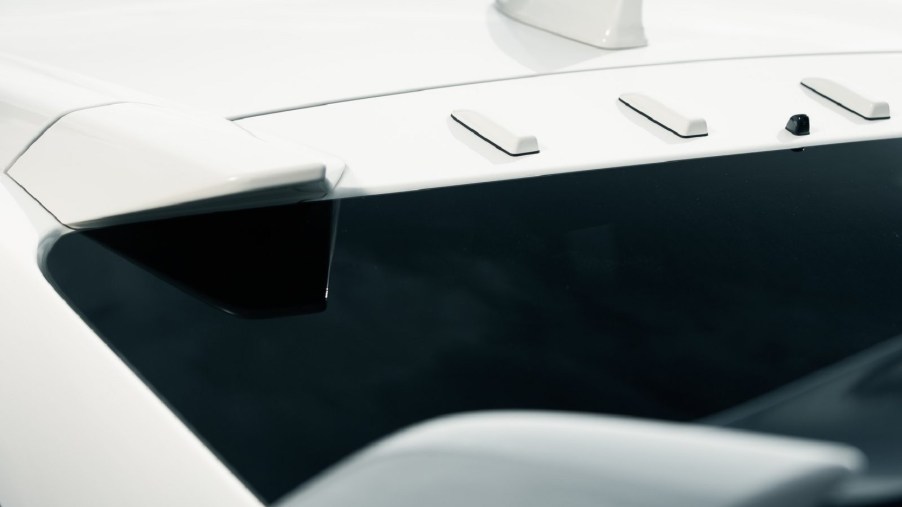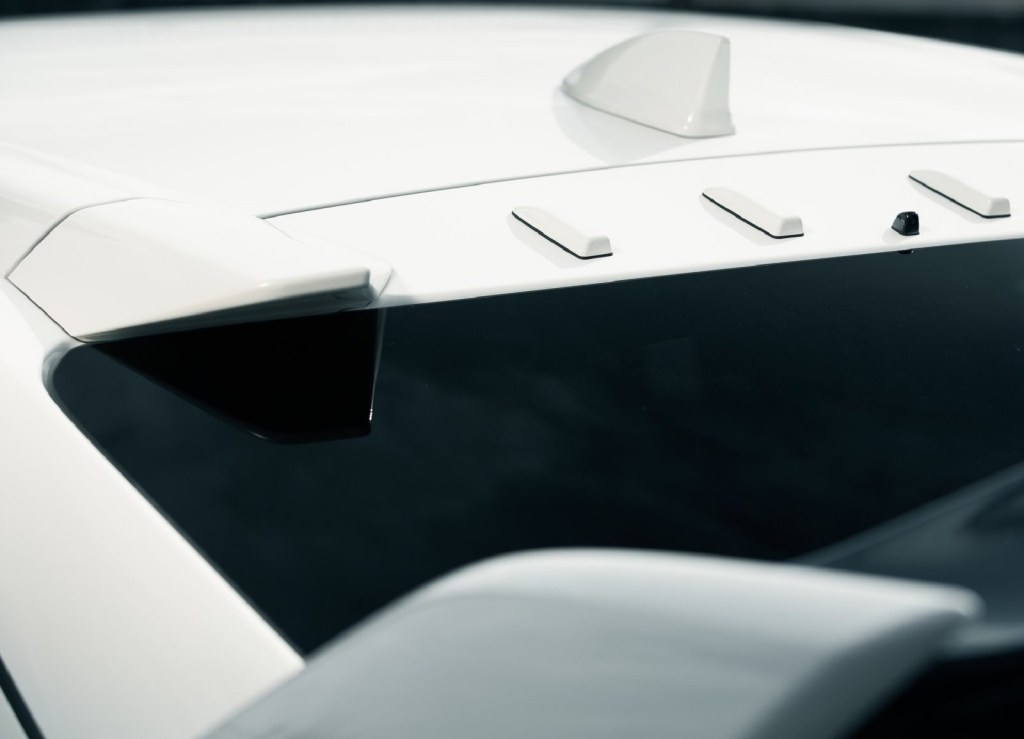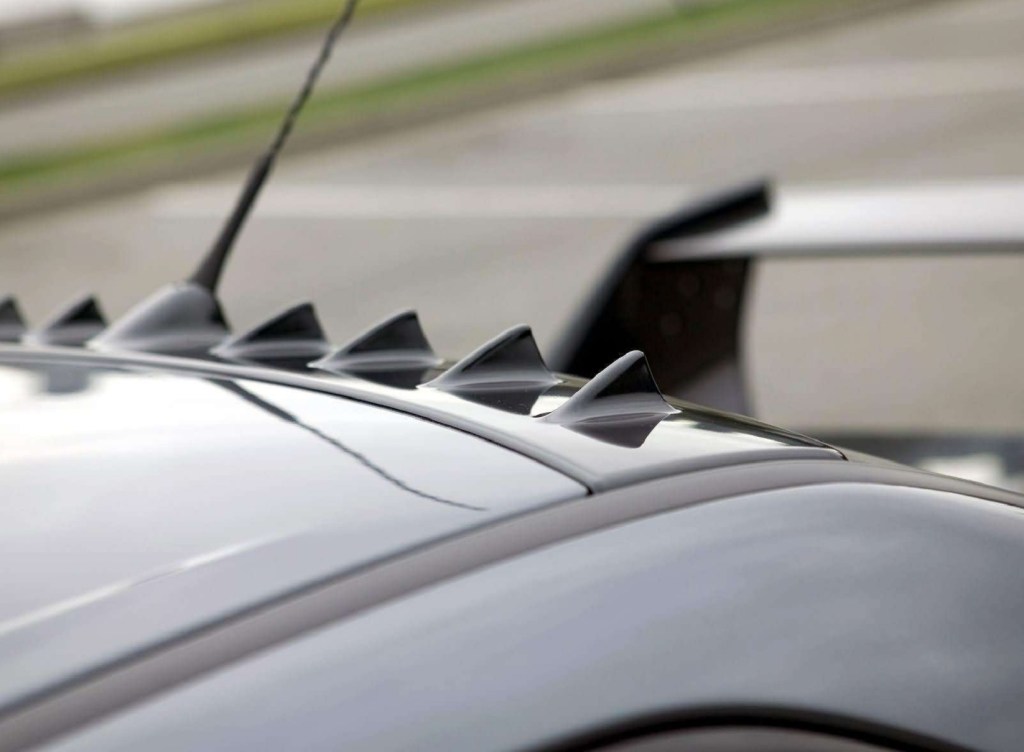
Do Vortex Generators Actually Help Road Cars?
Car spoilers have a purpose besides being flashy accessories. Although they’re technically not wings, both they and spoilers use the air rushing around cars to reduce lift. However, they’re not the only aerodynamic aide available to road cars. Some models, like the Honda Civic Type R, are starting to feature vortex generators as well. But are they there purely for looks, or do they deliver tangible benefits?
Fluid dynamics and boundary layers lead to vortex generators
Before we can discuss vortex generators’ functionality, it’s important to understand the phenomena that lead to their development. Specifically, the fluid dynamics phenomenon of boundary layer separation, DriveTribe explains. Which, full disclaimer, was part of my university degrees.
As air or any other fluid flows over an object, say, a car, some of it sticks to the surface. This creates a slower-moving viscous layer called a boundary layer. And car designers want this boundary layer to follow the line of the roof as closely as possible for “maximum aerodynamic efficiency,” CarThrottle explains.
Unfortunately, as the fluid within the boundary layer moves over the roof, and due to the same Bernoulli principle that governs airplane and car wings, it slams into increasing pressure, Aerospace Engineering explains. As a result, the boundary layer gradually slows down, stops, and reverses direction. Once that happens, the boundary layer separates into a turbulent wake. And that causes significant problems.
The turbulent wake effectively makes the car seem ‘bigger’ from the perspective of the oncoming air, NASA explains. As a result, drag significantly increases, increasing fuel consumption and sapping speed. And the wake is full of swirling eddies, creating a low-pressure zone immediately behind the car. This essentially sucks it backward via what’s known as ‘pressure drag,’ the University of Virginia explains.
Also, boundary layer separation limits how much air flows over the car’s spoiler and/or wing. Which means they can’t do their job properly. And it’s here where vortex generators come into play.
What are vortex generators supposed to do?

Cars aren’t the first motorized vehicles with vortex generators; planes had them first, the Journal of Fluids Engineering reports. And they’re also found on golf balls: the dimples are vortex generators, Phys.org explains. The ones on race cars and road cars like the Civic Type R typically look like triangles, slats, or fins, Carfax reports.
But regardless of their specific design, vortex generators have the same purpose: controlling boundary layer separation. They do this by generating vortices—hence the name—that pull high-energy turbulent air into the low-energy boundary layer. Doing so creates a more turbulent boundary layer, which means slightly more surface drag, BrightHub Engineering explains. However, there are several very good reasons for doing so.
A turbulent boundary layer stays connect for far longer than a non-turbulent one. As a result, the pressure drag basically vanishes and the turbulent wake shrinks. This decreases the overall drag on the car, which is extremely valuable for race cars, F1Technical explains. And by ‘cleaning up’ the airflow in this manner, vortex generators send more air to wings and spoilers. Thus, more downforce, Road & Track reports.
Should you put them on your road car?

It’s worth pointing out that the Civic Type R is by no means the first road car with vortex generators. The Mitsubishi Lancer Evo VIII MR had them back in 2003, Automobile reports. The Honda Ridgeline has them, too, on the door mirrors to decrease wind noise. But should you put vortex generators on a car that doesn’t already have them?
Vortex generators have noticeable benefits for sporty cars, both on and off the track, SpeedNews and Car and Driver report. But they have to be properly designed and fitted for your specific vehicle and its existing aero features. Something like the CTR, with its tall wing, gets an advantage from its vortex generators even at road-legal speeds, CarThrottle muses. But for a tiny spoiler on a car that never sees a racetrack or even a high-speed corner? They’re arguably little more than decorations.
Still, as with spoilers and wings, if you do it properly, vortex generators won’t be just for style.
Follow more updates from MotorBiscuit on our Facebook page.


